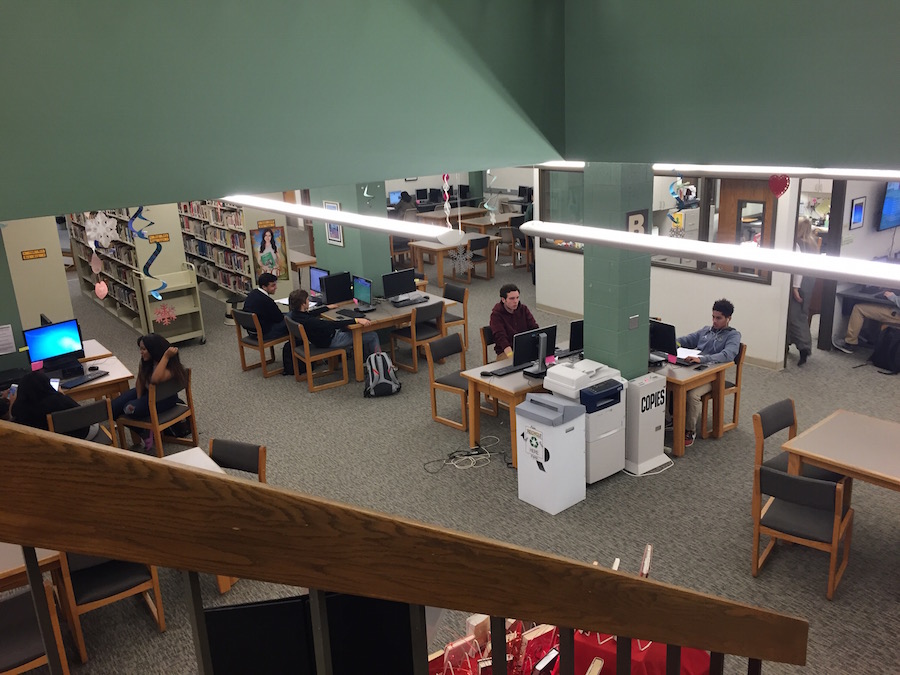Climbing to the top
The USA’s performance in education is plateauing. How can the system be reformed?
February 24, 2017
“What colleges are you looking at?”
Since the beginning of freshman year, this seems to be the most common question adults ask. Now, I’m assuming this daunting question will only be asked more, but, being a junior, I’ve started to think about college more seriously.
From the handful of college tours I’ve been to, there seems to be a pattern. The administrators or counselors will talk about a plethora of opportunities, astounding amount of diversity, and importance of community. However, in the end, they get down to the nitty gritty: GPA and test scores.
In the U.S., these two main factors determine where you go to college. Yes, volunteering and extracurriculars are important aspects too. However, a good college is more likely to accept you with a 4.0 and a 36 on your ACT compared to a 3.2 and a 24.
This thought stresses every fiber of my being.
My problem with this system is that students end up purely memorizing content and regurgitating it on tests, just to forget it a few days later.
This puts those who don’t have a knack for memorizing at a disadvantage. Grades are supposedly created to reflect a student’s quality of work. But what about work ethic? What if one student works harder to maintain a B in a class compared to a student who can sleep through the same class and squeak away with an A? Nope, grades don’t reflect that.
However, this got me thinking: Is every country like this? How can we improve?
Now, what was interesting is that some of the systems sound like they would advocate pressure cooker schools, where students are under a substantial amount of pressure to perform well, while others that succeed stress the importance of equity and creativity.

Finland
In Finland, teachers are not only required to receive their masters, but are selected from the top 10% of their class. This helps increase their accountability and ensures they are motivated to help every student. In addition, schools have an average of a 1:12 teacher to student ratio. This also guarantees that classes are small enough for teachers to individually know each of their students’ strengths and weaknesses.
Finland also tries to focus on equity. This way, the system remains the homogenous across the country and the same classes are offered in every school. Now, compare this to how City and West High are in the same school districts, but can’t even coordinate classes across the city.
Another factor that sounds too good to be true is that students receive substantially less amount of homework than those in other countries. The school days are shorter at 570 hours a year, compared to the U.S.’s approximate of 1,100 hours a year.
The philosophy is that teachers teach students how to learn, not how to take tests. This is groundbreaking! Learn? You mean success isn’t determined by bubbling in Scantrons your whole life?!
How radical.
After all this, they still outperform the U.S. on the Program for International Students Assessment (PISA). This test is taken by 15 year olds across the world every three years.
Singapore
Singapore started its “Teach Less, Learn More” initiative in 2004. This system emphasizes the quality of teaching versus the quantity of teaching. They have shifted their focus from performing well in exams, to critical thinking and creativity. They make sure their students find learning engaging.
Teachers are selected from the top third of their classes, and graduate from the most prestigious schools in Singapore.
Because of this, they realize all children learn differently, and make sure the teacher knows different styles of teaching in order to help each child.
United Kingdom
In the UK 16-19 year olds are focused on figuring out what the student is interested in. This is done through Education Finance Agency (EFA) programs. These programs are designed for each student to prepare them for work or further education in their desired areas. Not only will seniors be more prepared for college, but they will also get a better understanding of their area of interest.
Here in the U.S., students pretend to be in college by taking several AP classes in order to build their academic résumés. Often times students take AP classes just because it looks good on college applications, even if they’re not interested in the topic.
Now, don’t get me wrong, the ability to take college level courses to get credit is a great opportunity. It helps students stand out in their college application.
The tendency is that students take an unnecessary amount of AP courses, which stress them out to the brink of mental breakdowns in order to stand out. This is especially prevalent in high performing schools where students are pressured to take AP courses by their family or peers, and might not even want take them in the first place.
These countries are just a few examples of ways the U.S. could reform its education system. However, I realize we are very fortunate to have quality public education that often times we take for granted.
To end is a video I came across a while ago that has made a lasting impression on me, and will hopefully make you think, too.
